 Exhibitions and events are valuable because they allow face-to-face communication and offer opportunities for networking. Exhibitions enable you to meet the people that matter to your business in one place, including existing customers, new prospects, suppliers, advisers, investors and key figures in your industry. Exhibitions come in all shapes and sizes, but the two main types are consumer shows and trade fairs. There are events for every sector and profession and for many small businesses these are a crucial part of their marketing strategy. The benefits of exhibitingMany forms of marketing, including telemarketing, advertising and direct mail, involve intruding on customers which can cause resentment. Not so with exhibitions. Customers go to events prepared to give their time and attention and are often ready to buy. Face-to-face meetings mean that you can have a conversation with customers. As well as presenting your products and services, you get the opportunity to find out more about your customers and their needs. You can use exhibitions to carry out valuable market research. Trade shows attract qualified visitors and the majority often have buying responsibility. Indeed, trade fairs attract those people who can be difficult to get hold of at other times. Many arrive with credit card in hand and will have done their homework beforehand. Consumer shows can be a great launch pad for a new business or product and also offer the chance to do live demonstrations in front of a large audience. Press attention and the power of word of mouth means that you can create a real buzz about your product or service. As well as making sales, exhibitions can be used to forge new relationships, strengthen existing alliances, build databases, generate positive PR, recruit new staff and build your brand. Exhibitions and events also offer you the chance to keep up with industry developments. They can give you a snapshot of what's new, and you may get access to the movers and shakers. What's more, they are a good opportunity to keep an eye on the competition. Exhibiting checklistExhibitions can be a great place to meet potential customers face to face. Here are the key steps to exhibition success.
Creating your own networking opportunitiesYou don't necessarily have to be an exhibitor to get face-to-face contact with key prospects. For instance, it's worth going to exhibitions as a visitor. You get to meet large numbers of useful people in one place. To choose the right event, contact your trade association or local Chamber of Commerce and talk to your customers about which events they attend and why. To make the most of the opportunities, it's worth planning ahead and fixing some appointments. Another option is to create your own opportunity, such as a launch party or a product demonstration. Holding your own event is a good way to show your product or service in a tailor-made setting without the distraction of other exhibitors. You can create an event that exactly matches your needs and the needs of your target market. Networking is an important part of the marketing mix for small businesses. You can use networking to forge productive relationships with key people. Over time, these contacts can become powerful advocates that support and promote your business. There are many opportunities to meet the right people. Become an active participant in the local community and attend events aimed at your sector. Your local Chamber of Commerce will be able to point you in the right direction. There are also plenty of ways to network online that can help build valuable business relationships. In particular, there are sector-related groups on LinkedIn and Twitter that allow small business owners to link up with contacts, suppliers and customers. Whether online or in person, the best way to approach networking is to be helpful, likeable and knowledgeable. That way you create goodwill, an essential basis for any business relationship.
0 Comments
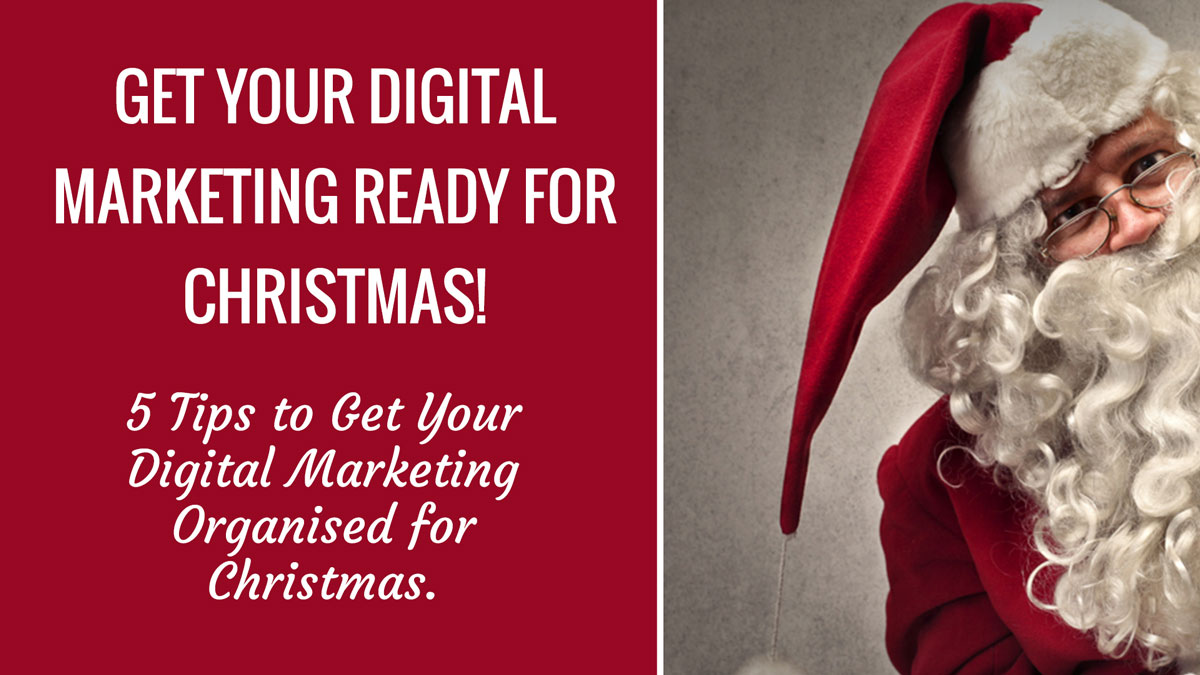 Sorry to mention the “C” word whilst still in November, but with more than half of annual retail sales occurring during the three months leading up to Christmas in the UK, and a large proportion of these happening between Black Friday and Boxing Day, the festive season can quite literally make or break brands. To make sure the festive season goes with a bang, some brands are spending more and more on big, flashy Christmas TV ads and campaigns to reach shoppers in the run-up to the big day, however not every brand has the budget required to take part in what many now refer to as the 'Super Bowl' of British Advertising. But fear not! As with Christmas presents what counts is not what you spend but the thought that goes into it making your gift, or marketing campaign, really relevant and personal. So, with so much at stake, and just a few months until the big day, what steps can marketers take now to ensure that their brand is at the top of the wish list this Christmas? CREATE EMOTIVE CONTENT To cut through all the noise, marketing campaigns need to spark conversations that are evergreen in quality and continue growing and developing long after seeding - and the best way to do that is by using emotion. John Lewis' Man on the Moon and Sainsbury's Mog TV commercials provide great examples of how to capitalise on human emotion. The first focuses on the less publicised side of loneliness experienced by many at Christmas, and the latter applies humour to unexpected, catastrophic events, whilst both also integrate the relatable 'time for sharing' theme to deliver a heartfelt message. Although each campaign was entertaining and successful in gaining many millions of media impressions, it is less clear whether they encourage the buyer to make a purchase, choose one brand over another or simply leave viewers with warm and fuzzy feelings. Without spending £7 million, there are many other ways for brands to get their products onto Santa's sleigh at a fraction of the cost. OUTSMART THE COMPETITION WITH A CLEVER AND CREATIVE SEO STRATEGY With online shopping now accounting for 27% of the UK's entire retail market, a solid strategy for SEO is crucial for helping the search engine spiders to recommend and index your website. Marketers should ensure that online content revolves around providing answers to trending queries rather than simply telling the audience what you want them to hear. Smart content uses your assets, is entrenched in research, will contain useful information and be ahead of the curve. And importantly, it will help to drive traffic to your website and grow conversions. MAKE SURE YOU'RE MOBILE FRIENDLY Search engines rank websites based on their inherent authority, for example, are your pages being linked to by third party sources, as well as components that communicate positive attributes like the website's speed, efficiency and general user experience. They also look at how mobile friendly your website is. Today, some 39% of people use smartphones as the primary mode of research for products and services (up from 19% in 2013), and purchases made using mobile devices are predicted to reach $1.915 trillion worldwide. With that in mind, it's important to make sure you are offering mobile users a great experience on your website, while also considering mobile users carefully when planning your ads. For instance, it is well worth adding geo-targeting to the mix to not only enable you to serve real time ads to nearby, potential customers but it also provides you with meaningful and identifiable insights on what people want, need and are interested in during the festive season. SHOW OFF YOUR PRODUCTS EFFECTIVELY ONLINE Product Listing Ads (PLA's) are continuing to go from strength to strength. Cost Per Clicks (CPC's) remain low, yet conversion rates and average order values are almost as high as pure brand, and the ROI is excellent. So how do you make the most out of PLA's at the most important time of the year? Marketers will need to ensure all of their products are in the feed, named and include prices. Each product should have its own line and all text and images need to be 'crawlable' so the links can be discovered and indexed. Your feed will have to be updated daily and product titles must be 70 characters or less and in this instance, the description lines must include relevant keywords. BE SMART ABOUT HOW YOU TARGET SHOPPERS ON SOCIAL Social Media is constantly evolving which is making it more useful and relevant to marketers, but also more difficult for brands to use to their advantage. Having millions of followers does not necessarily mean engagement. At a time of the year where brands should be trying to reach the right customers with the right message, it is vital to properly know and understand them. 55% of all FTSE companies' followers on Twitter appear to be fake or inactive which means that content often isn't even reaching 'real' users. Marketers need to dig deep when finding out where their target audience is spending time online and take advantage of data driven tools and proven advertising platforms to obtain results based on tangible business objectives and not just brand awareness, likes and shares. With the average household spending approximately £800 on Christmas shopping, including gifts, food and drinks, marketers need to plan early, set clear objectives and ensure all channels are working together simultaneously. And in most cases, they won't need to spend £7m on a TV ad. 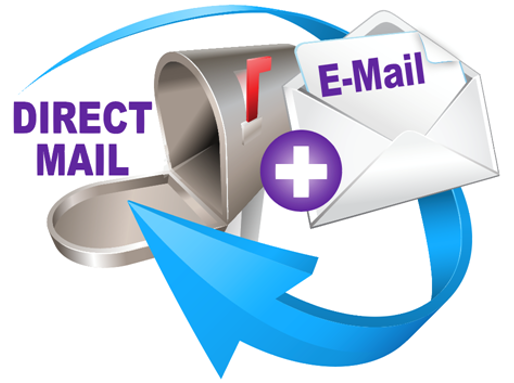 Direct mail and email can be very effective ways of marketing your business, allowing you to reach large numbers of customers at low cost. Email offers immediacy and low cost, while well-designed direct mail can really stand out. Whether you are using direct mail or email, you need to be sure you are contacting the right people with the right message. Monitoring responses allows you to track effectiveness and improve future mailings. 1. Is it for you? Establish who your target audience is
Decide what you want to achieve with existing customers For example:
Decide what you want to achieve with new prospects For example:
Identify what the costs would be
Assess likely response rates
Decide whether mailing is the right option
2. Your own mailing list The quality of your database is the most critical element in achieving a good response rate. It pays to create your own list
If you plan a significant volume of mailings, use database or CRM software
Your database is a valuable business asset and must be managed
3. External mailing lists If you want to reach out to a larger slice of the market, renting a mailing list is usually the most cost-effective method. Many lists can be rented or bought in
Identify your needs, in writing
Shop around until you find the right list at the right price
Check the quality of the list
Negotiate a deal
Do not re-use a list you have rented for one-off use
YOUR LEGAL RESPONSIBILITIES You must comply with the Data Protection Act
You must not send unsolicited email to individuals
You should not send direct mail to individuals who do not want it
Always allow individuals and businesses to opt-out from future mailings or email
4. The mailing A well-produced mailing will create a better response rate. Quality is important - you are competing with all the other mail and email that is sent to your target groups. Choose the right timing
Create a compelling mailing
Plan your follow up
5. Testing and monitoring A great advantage of direct mail is the ability to test a range of possibilities quickly and simply. Split test different mailings
Test different offers
Test different sectors of the market
Try different timings
Experiment to find out what works
6. Using a mailing house A small business can easily handle mailings of up to 1,000 items
Find potential suppliers
Shop around for quotes
Check that the mailing house does a good job
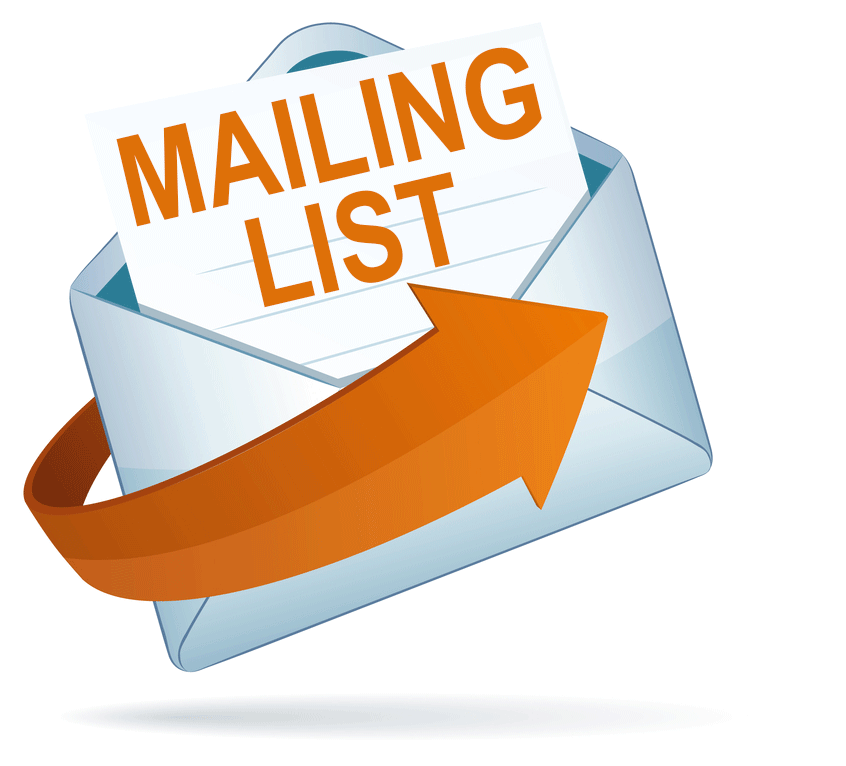 Your mailing list is one of your most valuable marketing resources. It holds information on your customers and prospects that can be used to improve customer satisfaction and increase sales. An up-to-date marketing database is a goldmine of useful information. It can help you run your business more effectively, providing a snapshot of your most profitable clients and highlighting sales trends. Building a mailing list Before you begin to create a database, you need to think about the information you want to hold on each contact. Basic customer details - address, email, telephone and fax numbers - are just a starting point. Details about buying habits will enable you to better understand your customers and meet their needs. You can also collect lifestyle information such as gender, age and income so you can target your marketing messages at specific demographic groups. Your contact list can be compiled from a number of sources. Start with your existing customers and contacts. You can then find new prospects in your area by looking in the electoral register. For business prospects, you can refer to the membership lists of industry bodies or local Chambers of Commerce. You can also consult directories. Copying and mailing a whole list, however, is a breach of copyright. Renting or buying a mailing list is a good way to reach a new customer base. List rental usually costs about £120 per 1,000 mailing names - but bear in mind lists of consumers tend to be cheaper than lists of business contacts. When you shop around for the best mailing list, you can ask for high spenders or other groups based on social type, location or job title. Keeping your database clean Keeping your mailing list clean is an important job. A good direct marketing contact list should have accurate, up-to-date and relevant data. It's vital to clean your list regularly by removing or amending incorrect data (for example, when mailings arrive 'returned to sender') and getting rid of duplicate entries. You will quickly alienate your contacts if you send them mailings that are wrongly addressed or irrelevant to them. The law gives individuals the right to stop their personal information being used for direct marketing. A request in writing must be honoured within 28 days. Individuals can also ask to see any personal information you hold about them to check if it is correct. You can improve the accuracy of your marketing database by checking it against the Royal Mail's Postcode Address File (PAF). This service checks spelling and accuracy of addresses and postcodes and corrects them in your mailing list. Finally, make sure you do regular checks against the Mailing Preference Service (MPS) list, the Telephone Preference List (TPS) and the Fax Preference Service (FPS). These services are for consumers who want to opt out of receiving unsolicited mail, calls or faxes. Using your database to improve profitability Your database can reveal your customers' buying behaviour, including the type and frequency of orders. It can highlight trend and patterns. It can even help you target your perfect customer. This is valuable market intelligence. By analysing your own data, you can make more informed decisions about everything from product development to pricing. Take that perfect customer profile, and you can find new prospects that match it and target them. Your mailing list also enables you to improve customer service and build better relationships with customers. By understanding your customers better, you can give them what they want. Your guide to buying mailing lists Buying a mailing list can be fraught with pitfalls, so here are my eight valuable pieces of advice to help you source the right mailing list 1. Don't delegate: I receive many enquiries from receptionists, apprentices or others who are not qualified to source marketing data. At the very least, the person sourcing the list should have an in-depth understanding of your marketing campaign objectives and target audiences. In our experience, delegation of data purchasing usually ends up with decisions being made on price only. If you want to go down this route, you can just buy a cheap list from eBay and throw the budget and potentially your good reputation down the drain. Even the business owner may not have much expertise in the nuances of marketing data. The safest route is to get expert impartial advice before you speak to data sales reps. 2. Don't believe the hype: All data list owners will tell you that their data is the best and that it is unique in the marketplace. The truth is it is all just hot air. When you speak to a mailing list company, you don't speak to the data experts, you speak to a sales person paid to tell you good things about their data. So take what the sales person says with a pinch of salt and ask the right questions so you can compare the different lists that are available. 3. Don't ask silly questions: How good is your data? You might think this is a good question, and certainly it's one many people ask, but what answer are you expecting back? I guarantee that all responders will give you a pre-prepared spiel that again leaves you with no tangible information about choosing a suitable list. Questions to ask should cover guarantees, legalities and data suppressions, opt-in mechanisms and sources, samples, duplicate prevention and more. A good broker will ask these questions for you. 4. Don't believe that all data is equal: Would you buy a "genuine article" Rolex off a man in the pub for a tenner and expect it to be real? No, you wouldn't. But some small business owners do believe the hype from data sales people and then they wonder why their mail server is shut off, why they have complaints about spam and why the data owner is slow to return their complaint call. 5. Don't buy from people who are not experienced: I have seen many companies appearing recently claiming to be data experts. It's vital to work with companies that have good data credentials so that you get lists that comply with legal and ethical marketing standards. 6. Don't jump in with both feet: As a rule of thumb, data sales people prefer you to buy large amounts of data and therefore spend more money with them. They frequently come up with silly offers to tempt you into giving them a large chunk of their monthly sales target. Then these offers come your way, take stock and work out whether it is actually worth your while to buy big chunks of untested data. As a rule of thumb, test first to validate the list before buying large volumes. And if it's too good an offer to be true, walk away. 7. But don't take the samples as gospel: If you have ever purchased a duff list after receiving a good sample, think about these questions before buying your next list: Do you think data companies realise the importance of good samples pre-sale? Do you think data companies have ever considered cleansing a sample before release? 8. Give data procurement the importance it deserves: Do your research. Adhere to direct marketing laws. Think of the ethics and brand implications of using poor quality and/or illegal marketing data. Buy from Direct Marketing Association (DMA) members only. And most importantly, speak to data experts. After all, would you fix your own car?  Testimonials are an extremely important part of the success of your business. On your relationship-building journey, which is lined with credibility and expertise, testimonials from loyal customers are a critical part of the presence of your business. What is a testimonial? Testimonials are written or recorded statements that support your credibility and level of expertise. They also strengthen your reputation by expressing the trust that other people have in you and your business offerings. They are a wonderful tool that helps you to attract a deeper interest from perspective clients and existing clients and will ultimately make you and your business increasingly more successful. Simply claiming to be "the best" is not enough to convince people to try your products or services. Testimonials offer an independent indication that you have done a good job and can help reassure new or nervous buyers, as well as distinguishing you from your competitors. Here are ten easy steps to generate customer testimonials:
Conclusion Credibility is essential to the success of your business. Strategic and intelligent use of testimonials can go a long way in promoting your business. The more online visibility and stronger reputation you have and continue to maintain, the stronger your business will become.  Thanks to the explosion of smartphones apps, it's easier than ever to stay productive while you're out of the office. You can do nearly anything on your smartphone, from checking emails and arranging meetings to updating several social media platforms at once and working on documents. The range of apps available to you will depend on what kind of mobile device you have. However, most popular apps are available for Apple iPhones and iPads, as well as Android phones and tablets. If you use a Microsoft Windows Phone, you may find that you have a smaller selection of apps from which to choose. Which are the best apps for businesses? There are apps for every conceivable business task. You’ll find tools to help you organise your task lists and prompt you with reminders and there are apps to help you remember your passwords. There’s also plenty of choices when it comes to storing and sharing files securely on the cloud. You can even organise your thoughts with mind-mapping apps. Social networking apps allow you to keep up with the conversations on Twitter and manage your activity on Facebook, LinkedIn and other social networks. There are also many location-based apps. These use GPS technology to guide you to an intended destination (always forgetting where you parked? Some apps even allow you to tag the exact spot!), but also to show potential customers where your business is located. Can I develop my own app? Many businesses have developed their own apps. However, think carefully before you create one for yourself or your customers. If you want to build an app for you and your staff to use, there's an excellent chance that an app already exists to do what you need. If you haven't found it yet, it might just be that you haven't looked hard enough. Alternatively, a mobile app can be a good way to build a closer relationship with your customers, but only if it delivers something they want and can't get elsewhere. With over 1.5m apps available for Apple devices alone, yours must be really special to stand out. It's easy to spend a lot of money on an app that attracts very few users, so think carefully and do plenty of research before going ahead. Successful entrepreneurs solve problems in a way that we could not have imagined. When you look around you, every product and service you use were all created to solve a problem. You wanted to get from one place to another faster, you got a car. You wanted to get from one country to another faster, you got planes. So, look for problems in your daily life and list each one of them. Once you have an exhaustive list, then start to think on how you can resolve them and shortlist the ones that make most sense. How do I develop my own app? Step 1: Identify the need. Validation will prove that a demand exists for your app. You can validate your idea by using the Google Keyword Planner tool to look for the number of people seeking out what you’re trying to do. You could also build a landing page that broadly highlights your app idea and seek user interest through an email signup. Step 2: Layout the flow and features. Validation of your app idea means that you’ve got something that people want to use. Now is the time to detail your product onto a document, or if you want to go the extra mile, use a wireframing tool. When putting your idea down on paper, remember to be as detailed as possible. Include the flow of how the user will navigate the app as well as all the features envisioned. This will help your developer to clearly understand your expectations. Step 3: Remove non-core features. From the flow and features document you prepared, start looking closely at features that you can remove. Offer only the core value of your app idea. Do not build features in the first version that are "nice to have" and can always be added later as an update. This will help keep the initial costs of development down and also help you get to market quicker. Step 4: Put design first. I have heard many entrepreneurs saying they want a very basic design and want to focus on just developing an app. They are so wrong! Design is not just about how your app looks, but it’s about how a user will experience the app. Step 5: Hire a designer/developer. Seek a development company that has great design talent and a solid development team. While hiring a developer, go online to check on their credibility and the apps that they have created. If you really liked an app they created from their portfolio, chances are, they could be the right one for your product. Step 6: Create developer accounts. You must register for a developer account with the respective app stores to be able to sell your app through their platform. Google’s Android charges $25 a year and Apple charges $99 annually. You have the option of registering as an individual or as a company, if you already have one formed. Step 7: Integrate analytics. Analytics help you track downloads, user engagement and retention for your mobile app. Make sure you use tools such as Flurry, which is available for free, and Localytics, that has a free and paid version. Step 8: Get feedback quickly and improvise. Once your app goes live on the app store, the first set of customers' usage and behaviour will give you insight into how to improve and enhance your app. Enhancements and changes are constant, so keep an eye on user feedback and keep building. Step 9: Introduce features. You built version one with limited features and only the core offering. Now is the time to evaluate and introduce the remaining features that were left out in the initial version. You will know through analytics and feedback whether the features are relevant anymore. These steps are not sacrosanct, but rather a guideline to building your app in the most effective manner based on my experience. Once you’re ready to start, you must also know that building a mobile app is the easiest part. Getting customers is where the challenge lies. 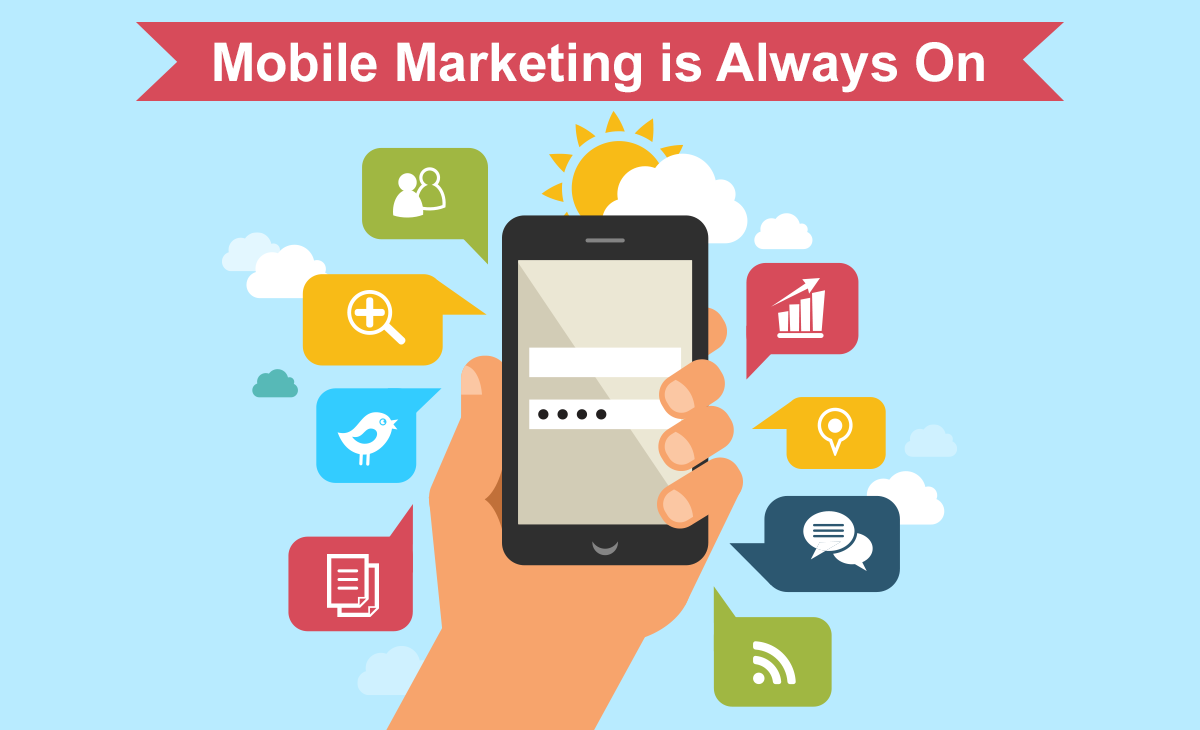 More than 90% of UK adults have a mobile phone, and it goes everywhere with them - making it the ideal way to get your messages read. The rise of smart phones, apps and mobile internet access has made the mobile phone a key battleground in the fight for new business and customers' attention. Although the pace of technological change gives you the chance to try innovative techniques and ideas, there are still opportunities for more traditional kinds of mobile marketing, like text message campaigns. One of the main attractions of mobile marketing is that mobile phones are almost always switched on and people usually have them to hand. That means text messages (also called SMSs, for 'short messaging service') are usually read. Mobile internet is growing fastWhat's more, the mobile phone has become the first place people turn in all kinds of situations: to check for directions or to look up the price of a product, for example -- indeed, to find any information online. Because people use their phones in these ways, your business can benefit hugely from intelligent mobile marketing. In fact, the majority of people in the UK now access the internet from mobile devices. This means potential customers are going to try and reach your business via their mobile phones whether you like it or not. You need to consider the experience they have. Mobile marketing improves satisfactionFor small businesses in particular, the mobile phone offers exciting opportunities to improve customer service and satisfaction. Texting and emailing customers on their mobile phones can be part of a better, more personal service. Sending details of promotions and events can boost business. If you're more ambitious, you can create your own mobile app. But whatever you do, you need to mobile-optimise your website so that people using smart phones can find what they're looking for. With the mobile landscape still changing swiftly, don't regard mobile marketing as separate to your other marketing efforts. In particular, it's becoming harder to determine where online marketing ends and mobile marketing begins. With mobile internet access commonplace, you must consider mobile users whenever you're changing your website or sending a marketing email. (Statistics suggest most emails are now opened on mobile devices, so it's vital your emails are readable on small screens.) You can't control how or when people use their mobile phones. And as other mobile devices like tablet computers become widely used, the mobile world will only continue to grow. Using mobile phones to inform your customersWhen it comes to mobile marketing, small firms often have an advantage over big brand names because they already have a personal relationship with customers. As a result, contacting them by mobile phone does not appear so intrusive. Many small businesses can benefit from mobile phone communication. For example, local entertainment businesses such as restaurants can use text and email marketing to advertise special events. And retailers can text details of sales or vouchers timed to catch shoppers in the right place. Businesses that work by appointment, such as opticians or hair salons, are ideally placed to use text messages or apps to send reminders and to alert customers when it's time to book their next appointment. What's more, they can send special offers and details of last-minute availability. Mobile marketing targetingSmart phones offer some interesting targeting opportunities. Most are equipped with location services, which means they can determine their location via GPS. Your mobile app or website can use this facility to direct customers to their nearest branch, or to display special offers when people are in your neighbourhood. With the right timing, this sort of targeting is valuable. Contact shoppers when they are on the high street - at the weekend - and you increase the potential for new business. But whatever you do, never send intrusive messages at unsocial hours. Finally, remember that if you intend to contact customers via text messages or calling their mobile phones, you need permission - just as with all other direct marketing.  John Wanamaker famously said: "Half the money I spend on advertising is wasted; the trouble is I don't know which half." With a clear strategy, you can maximise the results you get from your advertising. What are your goals? The first step in any media advertising campaign is to set your objectives. Your goal could be to raise awareness to pave the way for a sales drive. You could be advertising to drive response, perhaps by promoting an offer on your website or flagging up your stand in an exhibition guide. Or you could be aiming to change customer attitudes by highlighting specific benefits of your products or service. Targeting your audienceThen you need to work out how to reach your target audience. Local papers and free magazines could provide the right audience for a small business operating in a specific catchment area. Business-to-business firms can use industry publications and events to advertise to specific groups. Always negotiate - rates are rarely set in stone. Your advert needs to convey a clear message with a call to action. Your strategy should be based around promoting a single, solid benefit, so you need to understand what motivates your target audience to buy. The look and feel of your advertising should be in line with your brand values. A cheap-looking advertisement can damage your reputation. Return on investmentToday, no matter what type of advertising you do, you can measure the results. Analytics tools enable businesses to measure and fine-tune every aspect of their online advertising. Media advertising can be measured by using specific response mechanisms - dedicated telephone numbers, web pages, email addresses and even QR codes. After running your advert, you need to look at the response levels you generated. Did your advert deliver a good return on investment; in other words, has it brought in more new business than it cost to run? What adjustments can you make in the future? Fulfilling the enquiryFollow up is the final piece of the jigsaw. An enquiry from an ad is often just the first step towards making a sale, so make sure you and your sales staff are ready to make the most of the increased interest that your advertising brings. Advertising strategy faq's 1. What sort of businesses does advertising work well for? Most businesses need to advertise at some stage but for many, PR, events, direct selling, email and use of social media will also achieve excellent results. Online advertising is now generally the most cost-effective and easiest way to reach a large audience; national media publications are losing readership. However, local papers and magazines are still widely read and some specialist journals can also hit the mark if you want to reach a niche audience. Pay-per-click advertising is also a useful way to gain exposure for a niche or local business. 2. What can my advertising realistically achieve? A good advert might attract a lot of enquiries but lead to few sales because it is poorly worded or badly targeted. Measuring the effectiveness of your advertising is absolutely key. A well-designed advertisement can serve several purposes - generate sales or enquiries, improve your company image, create awareness of your products or services, support a sales promotion offer, or help establish you in new geographical areas. It is important to decide what precise purpose you want your ad to meet - before you design it. Remember to lead with a customer-focused proposition. Clear is better than clever. 3. How do I plan a campaign? The best time to advertise is when your target audience is most likely to buy your product or service. Set out what you want to achieve, which might include:
The campaign should cover the placement of adverts, budgets, design, timing and follow-up. Try to make your adverts stand out so that your limited budget goes further. It's important that your advertising is memorable. You need to decide the following:
4. HOW MUCH DO I NEED TO SPEND? Consider how much you normally spend and how effective it was in relation to your business objectives. Assess what your competitors are doing, as if they are advertising heavily you might need to do the same to ensure your message is heard. Consider how far you are from achieving your objectives. For example, if you are launching a new product you may need to spend heavily to increase awareness. Consider what your advertising is worth to you. Calculate how many extra sales you need to make to justify your spend. If you want to get value for money, only undertake campaigns that can be tested and revised as you go. Online advertising allows you to manage and control costs. By measuring results you can also refine your online campaigns and improve their return on investment. 5. Where can I find out about advertising opportunities? Talk to an online advertising expert to find out more about the costs and rewards of advertising online, including pay-per-click advertising. Find information about newspapers in your area and how to advertise in them on the News Media Association website at www.newsmediauk.org. Check circulation figures verified by the Audit Bureau of Circulations on the ABC website at www.abc.org.uk. Look in the BRAD directory (available in good reference libraries) for lists of newspapers and specialist magazines. Look for a publication whose readership is close to your target niche or segment. Order a media pack that will include a rate card and a back copy. Check the circulation figures (which should be ABC audited), but be aware that this may be very different to the number of people who will actually read the publication and see your advert. 6. Where should I advertise? Always match your customer profile with what the target segment reads or visits online. If you are uncertain, sample a few target customers and find out. Measure each of the approaches you are considering in terms of the cost per thousand target viewers. This comparison sometimes yields surprising results. For example, a poster in the high street may seem cheap, but it might only be read by a small proportion of your target audience. To reach a thousand people, it may have to be there for several weeks, making the actual cost higher. A small advert in a specialist magazine may initially be more costly. But if it reaches the target audience immediately and works out cheaper on a cost-per-thousand basis, it may be a better deal. Using pay-per-click to get to the top of search results, could pay off even more quickly. 7. Should I use an outside agency? As a rule of thumb, only consider using an advertising agency if you plan to spend more than £10,000 on advertising. Typically agency fees will amount to around 15 per cent of your advertising budget. Look for an agency that has experience of your industry or type of business. Look at samples of their past work. Ask for ideas to get a feel for what they can offer you, but do not expect too much without paying for it. Whether you decide to do your own advertising or use an outside agency, remember that your advertising creates an image of your company. It is better not to advertise at all, rather than have a poorly thought out, mediocre piece of advertising that damages your reputation. If you decide to do it yourself, get as much help as you can from people you know with experience in this field. 8. What sort of look should I go for? On average, a casual reader will spend about two seconds looking at your advert. If it has not caught the eye or grabbed their attention in that time, this reader will move on to something else. How your ad looks is therefore very important. An eye-catching headline is essential. It may be in the form of a question, a statement, an invitation or even a testimonial based on what your customers tell you. In the same way, well-chosen illustrations and the use of colour can help your advert stand out from the clutter. Always leave detailed design to the professionals; poor design can tarnish your reputation. The image of the advert should reflect your market position and carry through the same values and content. 9. How long does it take for an ad campaign to work? If you monitor the effectiveness of your campaign, you will get a measure of how long it must run to achieve its objectives. If you are not getting the anticipated results, tracking what is going on in this way will show you when and how your advertising needs to change. The quickest results tend to come from online advertising. Advertising should not be used as a quick, short-term fix, only brought into play when something is going wrong. It should be planned to support your overall marketing strategy and to complement all your other communications. 10. Should I try to match my competitors' advertising? You should keep an eye on your competitors' advertising, as this can give you valuable insights into their marketing strategies. But don't try to copy them. Marketing is all about creating a competitive advantage. Just doing the same as your competitors does not put you ahead of them. Either do better or be different but above all, work to your own strengths and don't feel the need to compete with your competitors for the sake of it. It is much better to put your energy into creating a customer offer that is attractive and profitable. 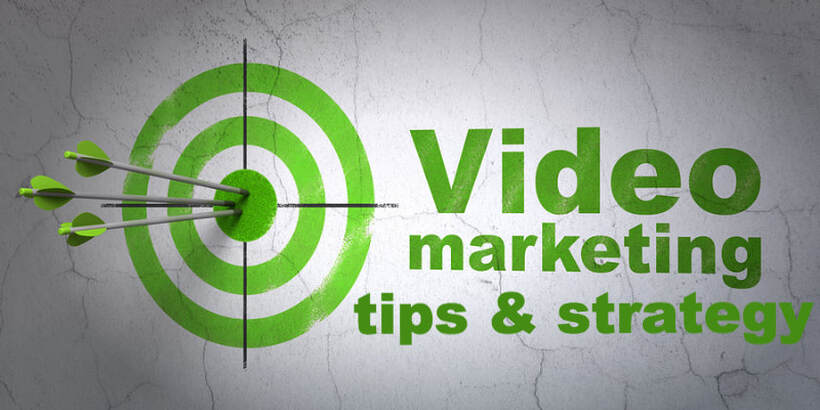 Have you thought about creating videos to promote your business? Video can boost your search engine rankings and is an effective way to increase customer engagement. But how do you go about making a video? According to YouTube they have more than a billion users - almost one-third of all people on the Internet. That’s impressive. But perhaps even more impressive is YouTube’s status as the world’s second biggest internet search engine. My point - because I'm not just singing the praises of YouTube - is that video has become a hugely powerful medium. Dig past the plethora of cute kittens, TV clips and skateboard accidents, and you'll find businesses everywhere are incorporating video into their marketing strategies. The power of videoHere's an example. A friend of mine decided it was time to buy a new tent. She intended to buy one that was reasonably priced, but found herself veering towards the Outwell brand. It meant going over budget but she soon figured out how to persuade her other half. How? She showed him Outwell's website and played him the videos so that he could understand why it was worth paying more. Outwell is a great example of a business that really understands what information customers want and how to communicate it. Video is known as rich media content and it can boost customer engagement, increase the time spent on a site and help convert sales. Used cleverly and with a purpose, video can transform your website into a dynamic interactive site that will attract repeat visits. And it’s not just YouTube. Video is available via many different platforms and services. Vimeo, for example, is a video sharing site that is similar to YouTube, although tends to feature more professionally-produced, arty clips and recordings. Most video services allow their users to discover your videos via their own websites and apps. You can also usually embed videos on your own website - and in other locations, such as your tweets, Facebook pages and Instagram posts. What can I put in my videos?How you use video will depend on your type of business and the services or products you offer. Here are a few ideas to get you started:
This is just scratching the surface, of course. You can use video in any way you choose. And as shooting, editing and sharing video is much easier and cheaper than ever, you can try different things to see what works for you. How easy is it to create video?Making a video is no longer the preserve of professionals and nor is it a costly exercise. Having said that, professionals can produce sophisticated, polished videos from around £250 each. This can be a worthwhile investment for high profile projects, although with a little time and effort you can get great results by doing it yourself. There are many online services and pieces of free software that make it easy to upload, embed and share video content. For instance:
You can shoot video with virtually any digital camera or smart phone, although it may be worth spending up to a couple of hundred pounds on a dedicated video camera. Think about what sort of video you want to shoot. For instance, if you plan to interview customers, consider a model with a connection for a separate microphone, so you can record the interview clearly. If you want to shoot action sequences, a rugged model like a GoPro might be a better choice. Make sure your video gets found Once you’ve created your video, upload it to video sharing websites such as YouTube and Vimeo as well as social media sites:
Make sure you add interesting titles and clear descriptions to your videos, to give them the best chance of getting found and viewed. Finally, encourage viewers to share and embed your video so they spread it for you. 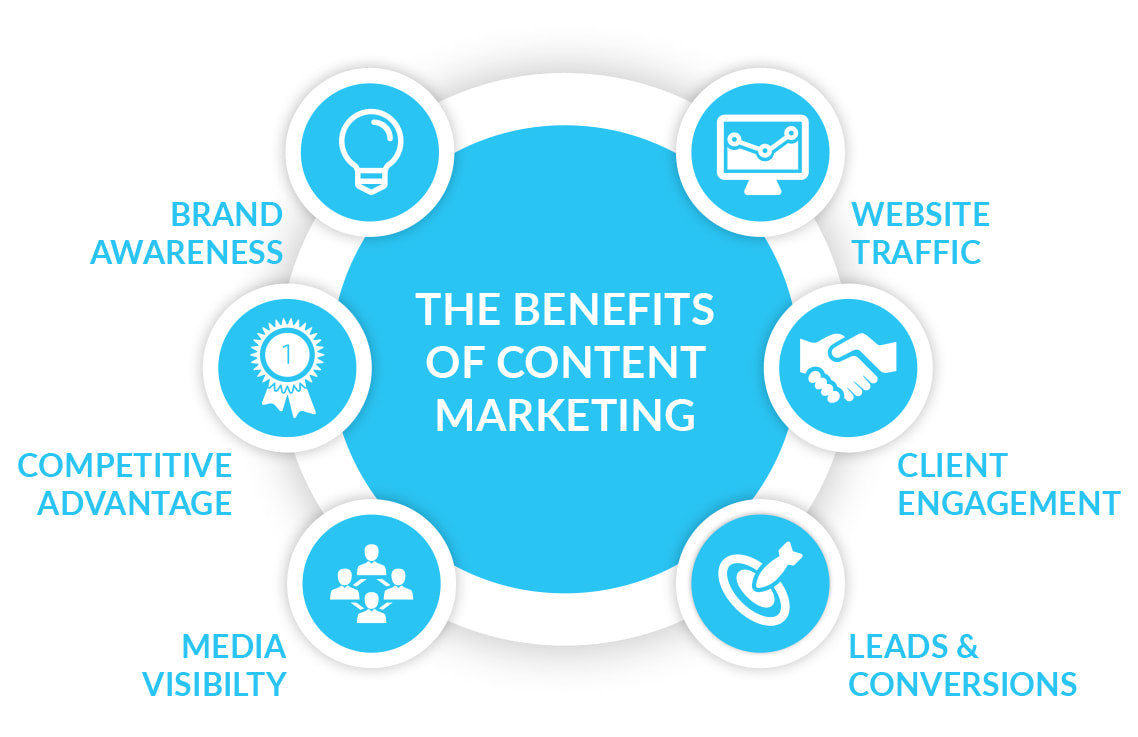 Content marketing has become a core business activity. For small businesses, sharing useful content online offers a powerful way to engage with customers - via blogs, case studies and email newsletters. At the same time, social media is helping new types of content to fly - as videos, infographics and more are all shared on the likes of Twitter, LinkedIn, Pinterest and Facebook. What can content marketing do for me? Relevant, interesting and valuable content allows businesses to build relationships. By sharing useful information that solves your customers' problems, you can improve your customer service and inspire loyalty and trust. By providing evidence that you can meet your promises - such as case studies and testimonials - you can also convince prospects to become customers without having to resort to a hard sell. Today, everyone expects to find the answers to their questions on your website. The right content can demonstrate your expertise, show you understand your customers and their needs, and position you as a leader in your field. Marketing content works incredibly hard for businesses. It can show your brand values and prove that you're up to date in your field. What’s more, it can attract more website visitors, improve your search rankings and widen your reach. Web copy that works
To make the most of your web presence, you need to ensure the content is fresh, relevant and accurate. If you want to attract new customers as well as keeping your old clients, your website needs to send out the right message. From product information and news to client testimonials and blogs, you need to think through carefully what content to include and how to write and present it online. The number one rule is to meet your customers' needs. Website copy is the meat of all business websites, but you've got to tell people what you can do for them rather than simply how great you are. It's no good having rambling mission statements or visions of the future - make sure your copy really helps the visitor. You should be addressing your customers and their needs rather than talking about yourself. It's less about the "I" and "we", and more about "you". Anticipate online customer questions Start by considering all of the questions people might have about your business and writing down the answers in straightforward language. Put yourself in your customers' shoes. They'll be thinking 'Is this company reputable? Who else have they worked with? What is the standard of their work like? Will I get value for money?' Answer their questions and you're more likely to convert a visit into a sale. Don't forget the information that guides people through registration, sign-ups or purchases. Many websites suffer drop-outs at this point simply through a lack of clear information or over-complicated processes. Tell people exactly what they need to do at each step, and ensure your online forms - such as registration or order forms - are simple and require the minimum amount of information. Organise your website information When it comes to structuring your content, bear in mind that people tend to scan websites rather than read them, so break up chunks of text with headings, subheadings and lists. Repeat key information on each page because customers can land anywhere on your site, make sure that each page can stand alone. To keep things fresh, update your site regularly, particularly date-sensitive blogs and news announcements, but think carefully about removing old copy. You can do some tweaking if the information is out of date, but once the page is in a search engine index, you could lose your ranking if you fiddle too much. |
AuthorLisa Hunter is an experienced Marketing, Events and Project Manager. She has over 10 years’ experience working in the IT and marketing industry, delivering strategic marketing support and managing creative projects for a wide-range of clients. In this blog she shares her knowledge and experiences…we hope you enjoy it. Archives
June 2019
Categories
All
|
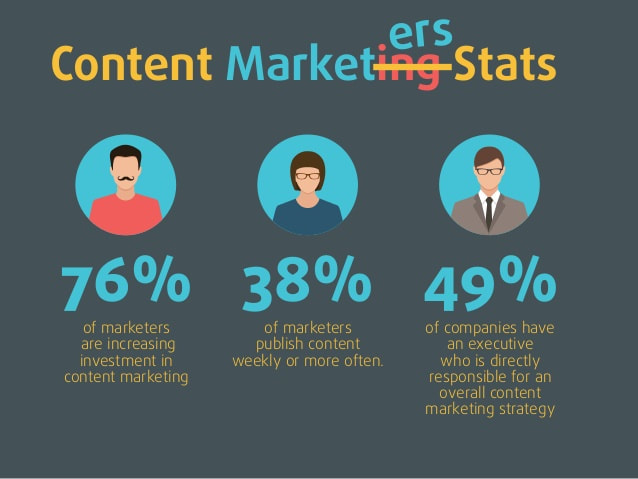
 RSS Feed
RSS Feed